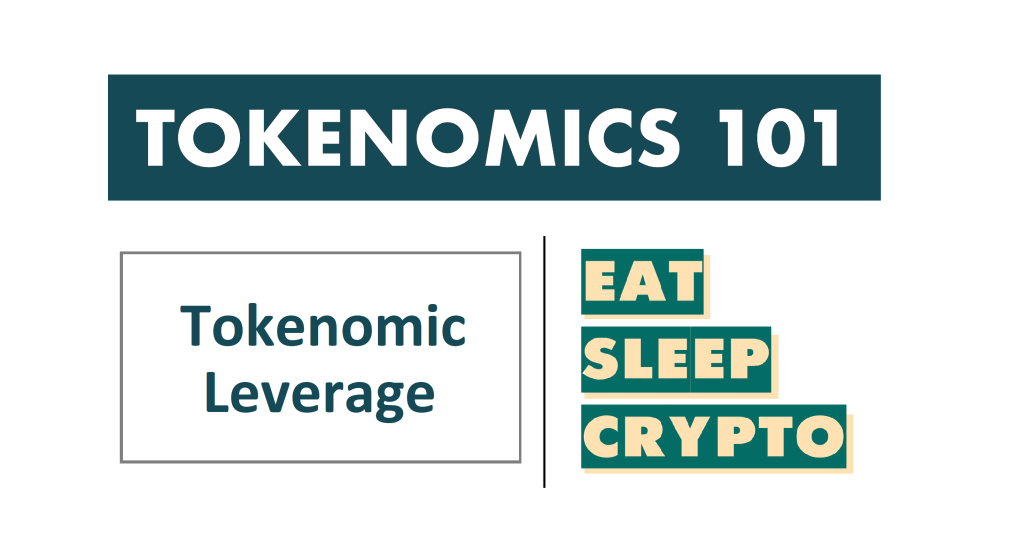
In the physical world, mechanical leverage multiplies the force of a given input. Similarly, tokenomic leverage multiplies value capture by affecting supply and demand.
Currency-like tokens capture value when used as a medium of exchange.
Adding leverage through tokenomic mechanisms in a protocol increases supply and/or demand pressure for a token, specific to the type of mechanism in use, by increasing the value exchanged through that token.
For example, staking decreases circulating supply by the amount staked; fee increases for an application increase the demand for the token used to pay fees.
Illustrating Tokenomic Leverage

Tokenomic leverage mirrors mechanical leverage. Using the analogy of a first-class lever, we can say that:
- Value being exchanged in a mechanism is the force applied to end of the lever.
- Value captured is the output of force from on the other end.
- Tokenomic leverage is the ratio of the distances of each force from the fulcrum.
Tokenomic leverage example
The ratio of value captured to value created or transferred is called tokenomic leverage.
Higher tokenomic leverage in a mechanism or protocol overall is analogous to higher profit margins in a traditional business.
Tokenomic mechanisms further up the hierarchy of value capture have higher leverage. And it’s possible to have a tokenomic leverage greater than 1 – indicating more value is being captured than created.

Users of Synthetix can create sAssets – synthetic TradFi assets collateralized by several times their dollar value in SNX tokens.
Synthetix governance decides this collateralization requirement, but it generally stays between 300% and 500%.
This means that SNX will necessarily be worth 3-5 times the value of all necessary sAssets.
So the tokenomic leverage of this mechanism in the protocol is between 3 and 5, depending on the current collateral requirement.
This is only possible because the protocol has a monopoly; higher tokenomic leverage requires extreme defensibility.
Synthetix’s collateralization mechanism introduces economic security issues only mitigated by active management of the c-ratio, and heavy inflation. As a result, Synthetix has begun to pivot its design toward other tokenomic mechanisms with lower value capture, illustrating tradeoffs between the principles of tokenomics.
Conclusion
Archimedes’s assertion – that simple mechanical leverage at scale was sufficient to move the Earth – was a bold and groundbreaking claim.
Tokenomic leverage is just as powerful, yet it’s highly underappreciated. It’s a key component of value capture – one of the three principles of tokenomics.
Even those with a deep understanding of tokenomics miss opportunities to apply leverage to their token. Others go But adding leverage to a token is one of the simplest, yet most effective ways to increase its price floor.
If you or a project you support is in need of tweaks to its design to increase leverage and maximize its value, reach out to us for a free consult.
